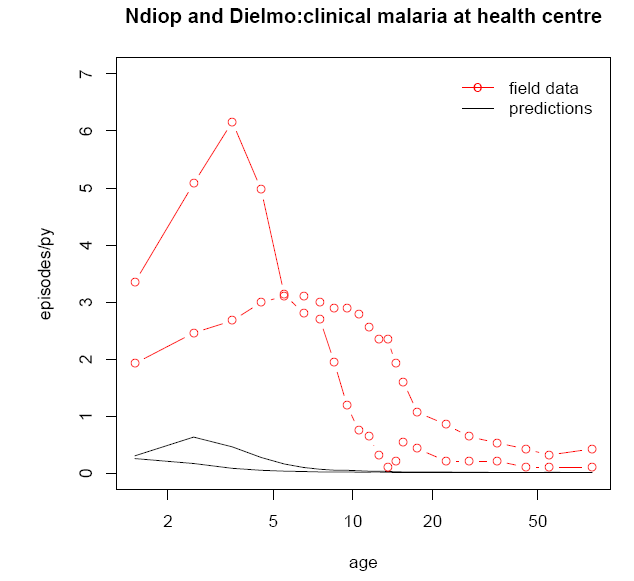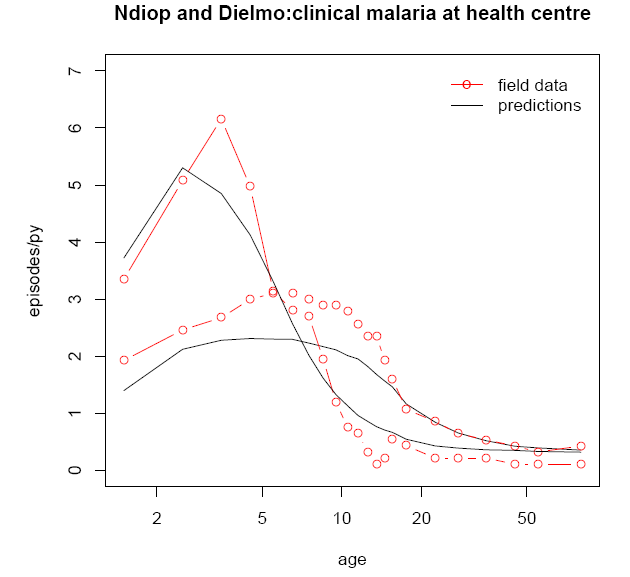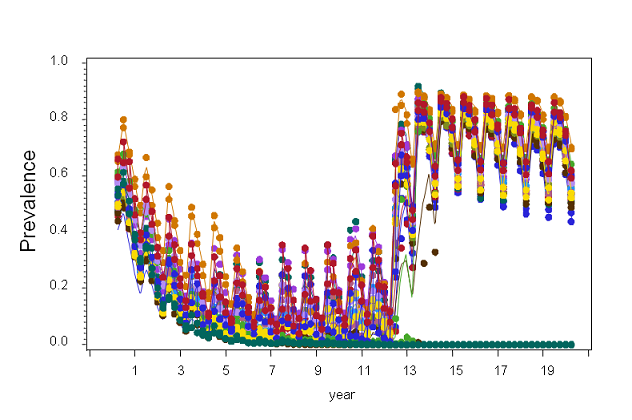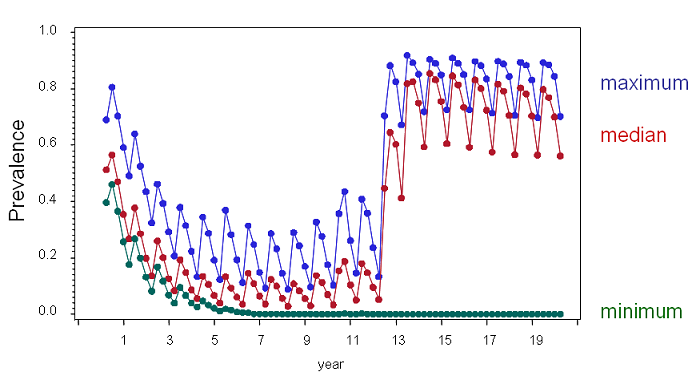Привіт Гість ( Вхід | Реєстрація )
| nikelong |
 Jul 8 2007, 15:22 Jul 8 2007, 15:22
Пост
#1
|
|
Тера ранчер           Група: Trusted Members Повідомлень: 11 909 З нами з: 19-March 05 Користувач №: 92 Стать: Чол |
 Проект "Malariacontrol.net" ----------------------------------------------------------------------------------------------------------
ТОП-20 участников:  ---------------------------------------------------------------------------------------------------------- Дата основания команды - 19.01.2007 Капитан - Arbalet ---------------------------------------------------------------------------------------------------------- Для присоединения к команде Украины: 1. Загрузите BOINC менеджер (Если его у Вас еще нет!) 2. Перейдите в "расширенный вид" 3. Выберите сервис ---> добавить проект 4. Введите адрес проекта http://www.malariacontrol.net/ 5. Введите свои регистрационные данные. 6. Найдите нашу команду. Она называется Ukraine и адрес ее статистики вы могли видеть выше. 7. Если есть доступные для загрузки задания Вы их получите и начнете расчеты. ---------------------------------------------------------------------------------------------------------- Полезная информация: Для идентификации пользователя в BOINC могут служить 2 вещи: 1) пара e-mail/пароль 2) межпроектный идентификационный ID (Cross-project ID) - 32значное шестнадцатиричное число. Если Вы пожелаете подключится ещё и к другому BOINC-проекту, то помните: чтобы не плодить новых аккаунтов при подключении к новому проекту или команде, нужно обязательно везде регистрироваться с одним и тем же e-mail/паролем либо CPID. если при регистрации в проекте указать другие e-mail или пароль, BOINC создаст новый аккаунт с тем же именем! ---------------------------------------------------------------------------------------------------------- О проекте: Проект создан для определения оптимальной стратегии борьбы против эпидемии малярии в Африке. В то время когда Вы посылаете электронное сообщение или блуждаете по сети, Ваш компьютер мог-бы помогать бороться с одним из самых тяжелых заболеваний, которое в Африке создает настоящую гуманитарную проблему, - малярией. Africa@Home, проект, который былпридуман и разработан в ЦЕРН, начал свою работу в июле (2006-го года). Пользователи домашних и офисных компьютеров по желанию предоставляют свои машини для интенсивной компьютерной симуляционной программы, которая называется malariacontrol.net, созданной исследователями Института тропиков в Швейцарии (STI). Малярия является причиной миллионов смертей в Центральной Африке ежегодно; она так-же приводитк самой высокой сметрности среди детей младше 5-ти лет. Программа malariacontrol.net используется для моделирования процессов того, как малярия распостраняется по территории Африки. Использование тысяч компьютеров добровольцев поможет ученым лучше понять проблему и совершенствовать лечение с помощью новых лекарств. Что-бы инсталлировать программу malariacontrol.net добровольцы просто должны загрузить необходимое программное обеспечение с сайта http://malariacontrol.net, коотрое будет проводить расчеты незаметно, пока пользователи заняты своей обычной работой. Результаты регулярно отправляются на сервер Университета Женевы для обработки. За несколько первых месяцев пробного этапа с 500 добровольцами malariacontrol.net смогла провести моделирование, которое в случае работы на одном компьютере заняло бы 150 лет. Эти исследования проводятся при финансовой поддержке Женевской международной аккадемической сети (GIAN). О малярии: Малярия — (средневековый итал. mala aria — «плохой воздух», ранее известная как «болотная лихорадка») — инфекционное заболевание, передаваемое человеку при укусах комаров рода Anopheles («малярийных комаров») и сопровождающееся повышением температуры, лихорадкой, ознобами, спленомегалией (увеличением размеров селезёнки), гепатомегалией (увеличением размеров печени), анемией. Характеризуется хроническим рецидивирующим течением. Вызывается протозойными паразитами рода Plasmodium (80-90 % случаев — Plasmodium falciparum) Малярия ежегодно вызывает около 350—500 миллионов инфицирований и около 1,3-3 миллиона смертей у людей [1]. На районы Африки южнее Сахары приходится 85-90 % этих случаев [2], в подавляющем большинстве инфицируются дети в возрасте до 5 лет. [3] Смертность, как ожидается, вырастет вдвое на протяжении следующих 20 лет. Ссылки по теме:График ППД команды за последние 60 дней: (Show/Hide) Марка по теме проекта:  ---------------------------------------------------------------------------------------------------------- Статус сервера выдачи заданий:  http://www.boinc-af.org/content/view/15/219/ http://www.dp.by/wiki/Projects/Malariacontrol http://wiki.bc-team.org/index.php?title=Malaria_Control.net/en http://www.irelandboinc.com/projects/40-pr...lariacontrolnet http://www.polarseti.ru/page.php?28 Це повідомлення відредагував nikelong: Sep 18 2010, 20:17 |
  |
Відповідей
| Rilian |
 Feb 27 2010, 13:43 Feb 27 2010, 13:43
Пост
#2
|
 interstellar           Група: Team member Повідомлень: 17 163 З нами з: 22-February 06 З: Торонто Користувач №: 184 Стать: НеСкажу Free-DC_CPID Парк машин: ноут и кусок сервера |
МалярияКонтрол несколько недель не будет выдавать задания, и пока предлагает посчитать другие медико-биологические проекты.
Также они выпустили пресс-релиз о проделанной работе malariacontrol.net will stop sending out new workunits for a few weeks starting Mon March 1st. Please read this and this for more information. QUOTE It has now become clear to us that the fitting runs currently in progress have (or will soon) reach a conclusion, whereas the new model we're working on won't be ready for fitting for probably a few more weeks, so we won't be making smooth changeover to fitting runs for the new model. There will, therefore, be a pause during which we won't be creating work units on malariacontrol.net, so if you all wouldn't mind supporting other BOINC projects in the meantime but sticking around for when we have the new model ready to use, we'd be grateful! We'll stop the fitting runs which have reached a conclusion today, leaving the remaining ones which look like they may still produce more optimal parameter sets until, provisionally, a week's time. At this point we expect to cease work unit generation altogether. Our current expected time-frame to have the new model ready to parameterize and ready for action on BOINC is April. In case any of you are wondering what that new model is, no, it's not our vector transmission model. It actually contains several new components predominantly including a new case management model (how sick people are treated, in hospital or a clinic, etc.), and a model detailing how quickly different drugs kill parasites and how long the drug is effective in humans that have taken it (this model is a big step up on what we had before). Another major difference between this new model (of new and old components) is that it now uses shorter time-steps of one day (opposed to 5 days, which was previously used). Status update Dear malariacontrol.net user, As you have read in our latest status update, we are close to the end of the current phase of the project. We will soon stop sending out workunits for a few weeks, until the project scientists have prepared the input data for the next phase of research. This is a good time to explain what we have achieved with your help over the last few months, and how these results will be used in the future. The main objective of this phase of the project was to optimize our mathematical models to get them to predict the malaria situation in the field as accurately as possible. We do this by repeatedly comparing model predictions with data from real-world malaria studies, trying out different values for the parameters we feed into the models to see which work best. We learn from the outcomes as we go along: that is, we sort of “evolve” our model, with your help, by testing a great many variations, picking the best performers, testing variations of these, and then repeating the process. This takes a great deal of computation, and couldn’t be done without volunteered resources. Here's a picture illustrating results from one of our recent runs: You can see how our measure of the discrepancy between model and real world (on the y-axis) decreases as the model is optimized through successive iterations (on the x-axis)  Another way of looking at the same data is by plotting the predicted outcomes of the model against real-world data. The following examples look at one outcome, the so-called age-incidence of malaria episodes: This is the rate at which humans of a certain age come down with malaria. Here it is shown as the number of episodes per person-year (py). The first of the two plots show an early stage of the fitting process, where field data and predictions are quite different. In the second image, plotted from data at a later stage, you can see the data and predictions converge: thus indicating that the model has become much more accurate.   If you're wondering what Ndiop and Dielmo means, these are the names of two Senegalese villages, that's where the field studies for this particular dataset were carried out. We’ve gone through this type of fitting process with quite a number of different model formulations. In technical terms, we have “parameterized a number of different models”. The goal is to now compare the predicted impact of various control interventions across many such model formulations, and find out how different model assumptions influence the predictions. This is a way of learning about model uncertainties, and is done routinely these days with climate models. The following -very preliminary- plots demonstrate where this is going: We have simulated an effective house spraying program that went on for twelve years and then stopped. We've then plotted the predictions from such a model ensemble (Prevalence, shown on the Y-axis, indicates the proportion of the human population with parasites in their blood):   One of our top priorities in the near future will be the design and analysis of more simulation experiments like this one, predicting the effect of a number of different malaria control interventions (Bed nets, indoor spraying, vaccines, case management,etc.). Once optimized-- though your contributions-- these models can be used to develop intelligent and effective deployment strategies, hopefully saving a great many lives. Thank you for your ongoing interest and support! On behalf of the modeling team, Nick ____________ Nicolas Maire Swiss Tropical Institute -------------------- |
Повідомлення у даній Темі
 nikelong Malariacontrol.net Jul 8 2007, 15:22
nikelong Malariacontrol.net Jul 8 2007, 15:22
 ReMMeR Порадовала трехмерная визуализация ! :)
Хотя п... Jan 7 2008, 10:55
ReMMeR Порадовала трехмерная визуализация ! :)
Хотя п... Jan 7 2008, 10:55

 KoDAk
Порадовала трехмерная визуализация ! :)
Хотя ... Jan 8 2008, 00:10
KoDAk
Порадовала трехмерная визуализация ! :)
Хотя ... Jan 8 2008, 00:10
 ReMMeR Нифига себе апдейт ядра - оно джаву на 20 метров в... Jan 7 2008, 23:50
ReMMeR Нифига себе апдейт ядра - оно джаву на 20 метров в... Jan 7 2008, 23:50
 ReMMeR Вот :)
Или я не понял зачем оно :)
Jan 8 2008, 00:24
ReMMeR Вот :)
Или я не понял зачем оно :)
Jan 8 2008, 00:24
 KoDAk Это скорей диаграммы распределения растростанения ... Jan 8 2008, 00:40
KoDAk Это скорей диаграммы распределения растростанения ... Jan 8 2008, 00:40
 ReMMeR
Да
Красиво, не спорю :)
а зачем ? :) Jan 8 2008, 11:20
ReMMeR
Да
Красиво, не спорю :)
а зачем ? :) Jan 8 2008, 11:20
 Arbalet
Красиво, не спорю :)
а зачем ? :)
Так тебе ведь ... Jan 8 2008, 13:12
Arbalet
Красиво, не спорю :)
а зачем ? :)
Так тебе ведь ... Jan 8 2008, 13:12
 ReMMeR Оно же в не показывается по дефолту :)
Наврное кто... Jan 8 2008, 15:58
ReMMeR Оно же в не показывается по дефолту :)
Наврное кто... Jan 8 2008, 15:58
 YuRi Зато именно тогда, когда ты оставляешь машину в по... Jan 9 2008, 00:18
YuRi Зато именно тогда, когда ты оставляешь машину в по... Jan 9 2008, 00:18
 ReMMeR это же peace death Jan 9 2008, 00:30
ReMMeR это же peace death Jan 9 2008, 00:30
 Некто joined May 21 2008, 14:59
Некто joined May 21 2008, 14:59
 mad Вот и я присоединился. May 23 2008, 09:53
mad Вот и я присоединился. May 23 2008, 09:53
 Некто какие типы заданий выгоднее всего? :) May 23 2008, 16:20
Некто какие типы заданий выгоднее всего? :) May 23 2008, 16:20
 Некто может, стоит попробовать оптимизированные боинк-кл... May 27 2008, 19:54
Некто может, стоит попробовать оптимизированные боинк-кл... May 27 2008, 19:54
 Некто Claimed кредит получилсо приблизительно такой же, ... May 27 2008, 21:18
Некто Claimed кредит получилсо приблизительно такой же, ... May 27 2008, 21:18

 nikelong
Claimed кредит получилсо приблизительно такой же,... May 27 2008, 21:26
nikelong
Claimed кредит получилсо приблизительно такой же,... May 27 2008, 21:26

 (_KoDAk_)
Claimed кредит получилсо приблизительно такой же,... May 27 2008, 22:13
(_KoDAk_)
Claimed кредит получилсо приблизительно такой же,... May 27 2008, 22:13

 Некто
Claimed кредит получилсо приблизительно такой же... May 27 2008, 23:10
Некто
Claimed кредит получилсо приблизительно такой же... May 27 2008, 23:10
 (_KoDAk_) ну как насчитают так пасмотрим
ну седня проверим..... May 27 2008, 23:16
(_KoDAk_) ну как насчитают так пасмотрим
ну седня проверим..... May 27 2008, 23:16  |
1 Користувачів переглядають дану тему (1 Гостей і 0 Прихованих Користувачів)
0 Користувачів:

|
Lo-Fi Версія | Поточний час: 14th December 2025 - 09:23 |


















